PxDx (Physical Diagnosis)

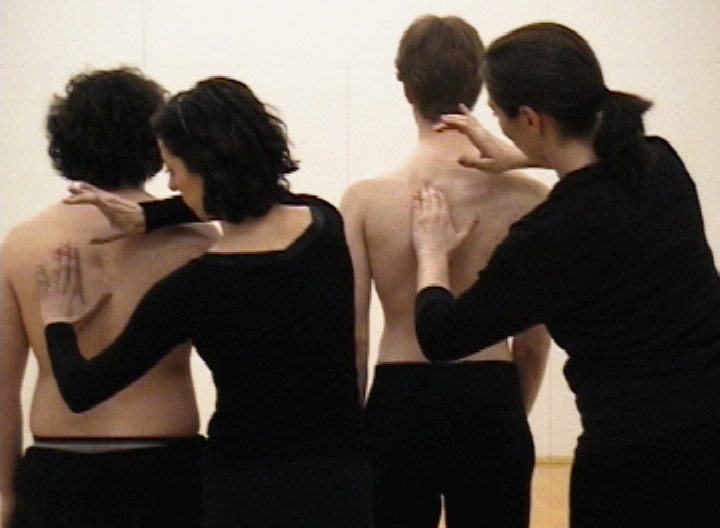
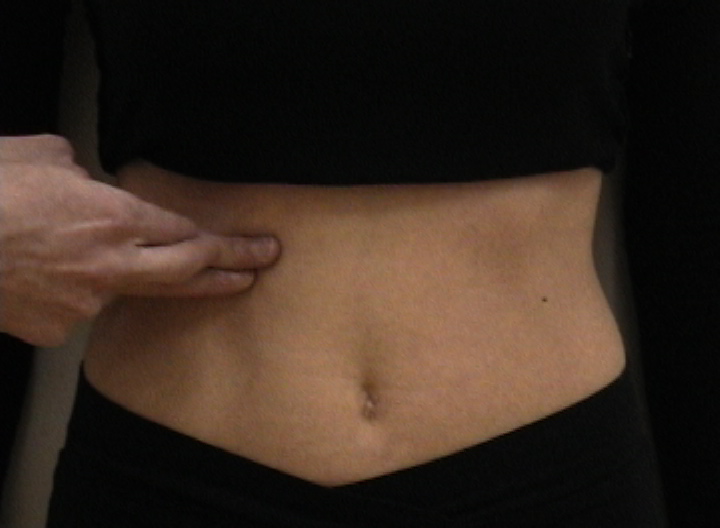
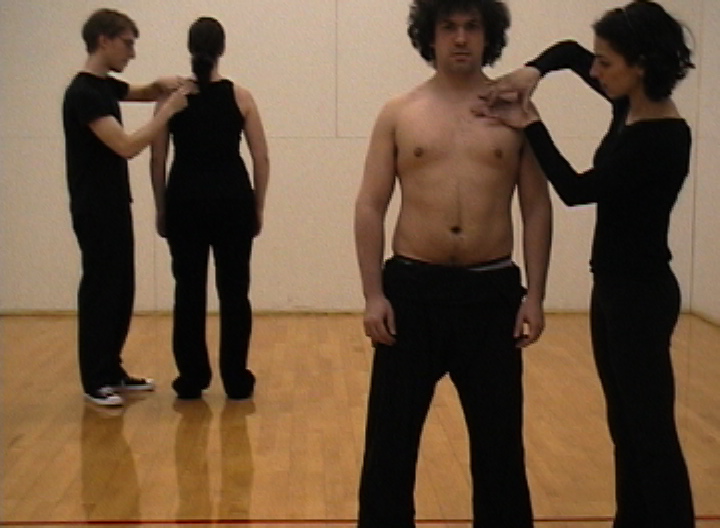
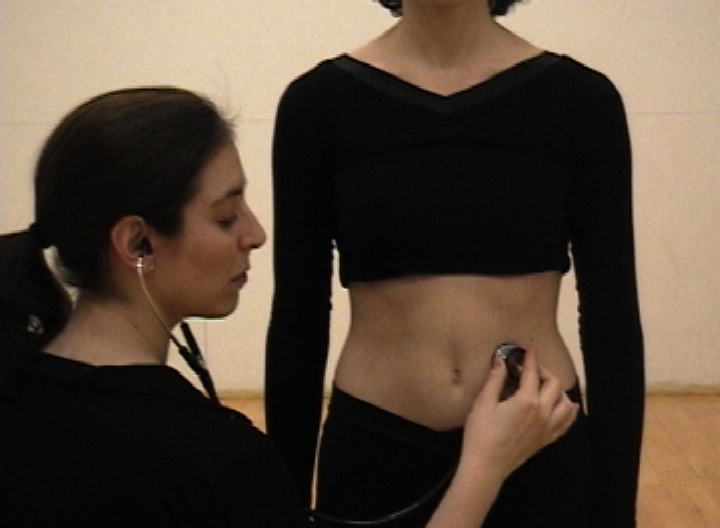
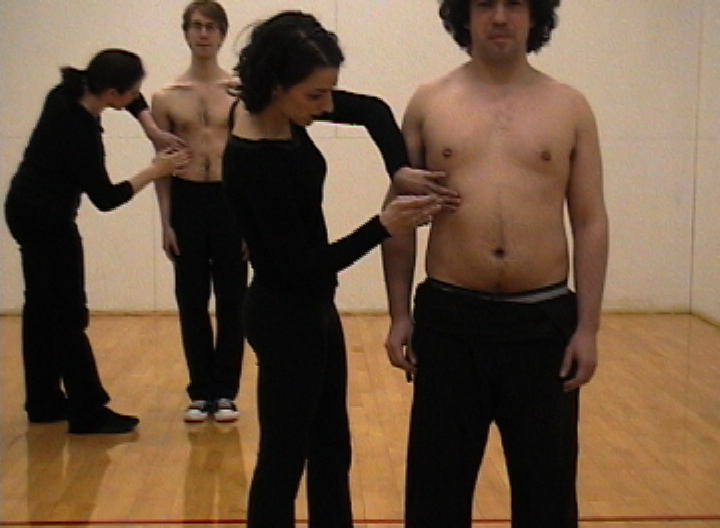

A
short film by Mark Goldin and Dana Kotler
Starring Ari Gladstein, Mark Goldin, Dana Kotler, Evanthia Roussos, George
Singer
Filming Assistance by Nicole McKinnon
2007
Physical diagnosis, as practiced by doctors for generations, is inherently both a visual and auditory exercise. Despite technological advances, physicians are still guided by the classic triad of “look, listen, and feel.” The exam has a characteristic rhythm and choreography: the physician’s placement, the methodical positioning of the stethoscope over the chest, the horizontal and vertical movement of the eyes, the pattern of palpation over the abdomen, the rhythm of a heartbeat. PxDx (Physical Diagnosis) began as an opportunity for artists-turned-doctors Mark Goldin and Dana Kotler to integrate their then two years of medical training with their many years of creative shenanigans. Mark applied his interest in musique concrète and experience as an electronic composer to create the score. Dana called on her training and professional experience in modern dance and choreography to direct the visual aspects of the film. The film premiered in NYC at Cinema Village East on July 24th 2007 as part of the NY International Independent Film and Video Festival, where it was subsequently awarded Best Short Film – Experimental. The backbone of the musical score is made up of percussion—the sounds made by tapping the body over the lungs or abdomen, which give the physician vital information about underlying structure and function. A dull sound over the lungs can represent fluid collection; a dull sound in the abdomen can represent an enlarged liver. The phrase “ninety nine,” spoken by the patient, is used to assess vibrations at points over the lungs when examining for pathology. Physical diagnosis combines the skill of executing technique and the art of interpreting subtle differences within findings. PxDx (Physical Diagnosis) examines the sounds, rhythms and choreography of the physical exam. This innovative short film brings the “art” of physical diagnosis out of the hospital and into an entirely new medium.
